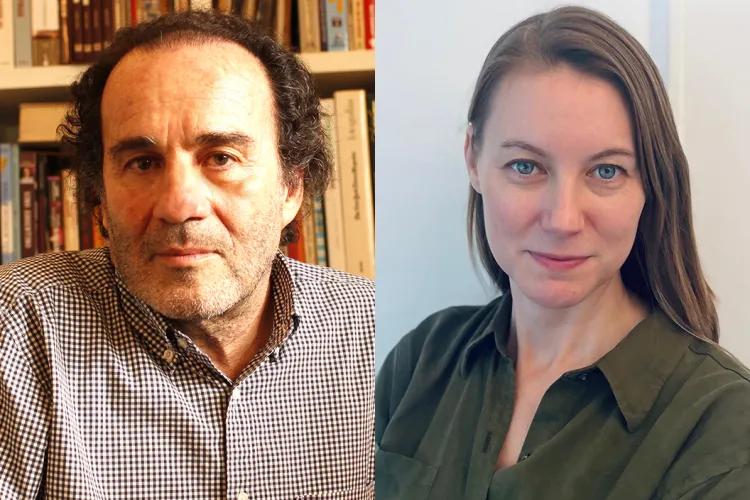Nuanced History of Buenos Aires Revealed in New Book by Diego Armus and Lisa Ubelaker Andrade ’06

In writing the book, Armus and Ubelaker Andrade '06 sought to tell the history of Bueno Aires in a new way.
Diego Armus, professor of history, and Lisa Ubelaker Andrade ’06, a researcher and professor at the Universidad de San Andrés in Argentina, offer a fresh perspective on the culture of Argentina's capital city in The Buenos Aires Reader: History, Culture, Politics (Duke University Press, 2024). The book is part of the World and Latin America Readers series and offers students, curious visitors, and interested academics an insider’s view of the city’s past and present.
Armus and Ubelaker Andrade are both historians, though they have distinctly different connections to Buenos Aires. The book represents the culmination of a decadelong collaboration.
Armus, who is from Buenos Aires, is a historian of Latin America and an expert in the history of diseases and health. He joined the College in 2001 and teaches courses on Latin American history with a focus on urban and sociocultural issues. During his last sabbatical, he was the recipient of the prestigious Humboldt Research Award, an honor granted by the Alexander von Humboldt Foundation in Germany to only 100 scholars worldwide. In Berlin, Armus worked in affiliation with the Freie Unviersität on research related to the global history of pandemics with a focus on Latin America.
Ubelaker Andrade is a historian of Latin America specializing in transnational U.S. media and cultural history. She first studied in Buenos Aires at Armus’ introduction while at Swarthmore and returned to the city as a graduate student at Yale University. After receiving her doctorate, she moved to Buenos Aires and began working at the Universidad de San Andrés; she is also a Global Lecturer at New York University—Buenos Aires.
“Diego is from Buenos Aires, and I consider myself an immigrant to the city,” says Ubelaker Andrade. “While we both approached these topics as historians, we have different vantage points. To co-write this book, we spent many hours debating and discussing topics, but always with a real eagerness to learn from the other’s point of view. I know I learned an enormous amount, and I think I also convinced Diego of a few things — though we never agreed on soccer. He’s a fan of Boca Juniors, and at my house, we are devoted members of River Plate. Any reference to either team required real negotiation.”
In writing this book, Armus and Ubelaker Andrade sought to tell the city’s history in a new way. Their aim, says Armus, was to bring together new material with existing research to tell a story that satisfied the historian’s eye for nuance but felt truly accessible to a non-local audience.

To do so, they departed from a political chronology and instead organized The Buenos Aires Reader around several key topics that they saw generating curiosity and discussion among residents and visitors alike. The result is a book that invites readers to explore the city through themes like neighborhood cultures, public protests, culinary traditions, sports, mass media, and nightlife, as well as artistic and literary representations of the city and its culture. The authors trace how political, economic, and social changes intertwine in the histories of each theme and are followed by a curation of examples that bring the topics to life — song lyrics, letters, photographs, fiction, poetry, cartoons, essays, interviews, and first-person accounts — many translated into English for the first time.
“This format allowed us to highlight diverse stories and conflicting perspectives while offering insight into the city’s politics, economics, and social movements,” says Armus. “Our hope is that this volume captures Buenos Aires’s heterogeneity and its energy.”
“Each topic opened wonderful opportunities to discuss aspects of local culture that are usually left out of narratives of the city’s history,” Ubelaker Andrade adds.
Several Swarthmore students lent their skills to The Buenos Aires Reader. They worked with the authors to collect documents, revise the manuscript, and work on translations.
“It was quite the Swarthmorean endeavor,” says Ubelaker Andrade, “and a testament to Diego’s inclination to mentor and include his students.”



